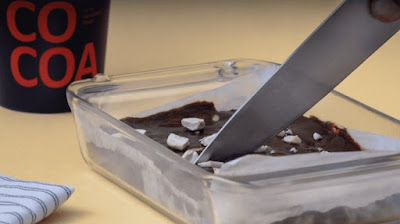Tips & Tricks for Making the Ultimate Cheesecake
1. Always keep your cream cheese at room temp.
It's all about trying to ensure your cheesecake isn't uneven and that the components blend nicely. Cream cheese that is too hard will not mix properly and will result in a lumpy mess, thus it must be at room temperature. In a pinch, remove the cream cheese from the foil wrapper, cut it into smaller parts, and microwave for about 15 seconds each time until softened.
Also, when it comes to cream cheese, the full fat ordinary stuff makes the tastiest cheesecake. More fat equals more creaminess, and there are no fillers or fat-replacement ingredients. You don't want anything wacky going on with your cheesecake texture. Nothing but real, delicious Mini Cheesecake Cups.
2. Add a little flour or cornstarch.
I feel that a small amount of flour makes a significant difference in a cheesecake. The starch inhibits the egg proteins from over-coagulating, resulting in a rich creamy texture and fewer cracks. If you're searching for a gluten-free substitute, cornstarch will also work.
3. Finish with a dollop of sour cream.
While this does not guarantee that your cheesecake will bake properly, I do believe that the extra sour flavour and creamy consistency will help you achieve the ideal cheesecake. If you really must replace it, greek yoghurt would suffice, but the flavour will be noticeably different.
4. Do not over-mix the batter or use a high-speed mixer.
Overmixing and high-speed churning both add air to a batter. A cheesecake with too much air can break in a variety of ways. One - large air bubbles can come to the top, causing fissures or small craters. Two, adding air causes things to rise, and far too much increase in a cheesecake is bad. It can rise excessively or too soon, then descend and crack.
This also relates to the first point concerning room temperature cream cheese. If your cream cheese isn't soft adequate, you'll need to stir it in more thoroughly to get rid of the lumps. So, once again, make sure it's soft. In addition, more air is introduced during the way of upgrading eggs to the batter, therefore using a lower speed.
5. Make use of a water bath.
This is a process that most people would like to avoid at all costs, but trust me when I say that the extra few minutes are well worth it. There are several advantages. For starters, the water bath creates steam, which keeps the cheesecake from wearing out and breaking. Second, the water bath prevents the edges of the cheesecake from baking faster than the centre. It aids in the uniform baking of baked goods, as well as the prevention of cracks.
If you skip the water bath, you'll usually end up with a cheesecake that collapses in the centre, browns around too much the edges, and splits. All of them are some of the deadliest enemies of a flawless cheesecake. Make the time for the extra step, and you will not be sorry!
6. Close the oven door.
If you open the oven door during baking, all of the good hot, steamy air will escape. The temperature difference may cause the cheesecake to collapse in the centre or bake unevenly.



Comments
Post a Comment